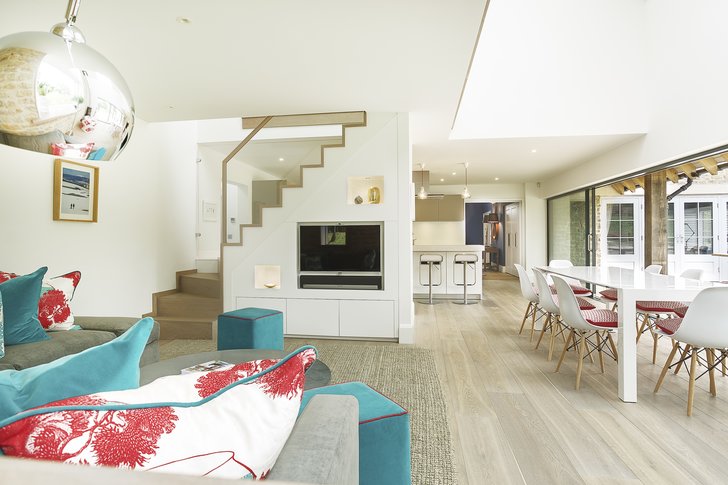Get Inside Design
Insights into the world of interior design - straight to your inbox.
How to get the best from your interior designer, part one
The difference between a successful project and an OK one is a good relationship with your designer. But how do you make that happen? We asked a client and designer for their sides of the story.
 [Oxfordshire interior by Emma Hooton Ltd. Photograph by Martin Gardner]
[Oxfordshire interior by Emma Hooton Ltd. Photograph by Martin Gardner]
Communicating the brief
Both Caroline and Emma agree that clear communication is the key to a successful project. Good communication starts at the briefing meeting. Ensure that all the decision-makers are present and fully involved and that you are all open and honest about what you want (and don't want) and why. Your designer will need to get inside your head and they only way he or she can do this is if you reveal what you are thinking.
‘The designer has to understand your personality and your family,’ says Caroline. ‘The more you let them into your life, the better will be the result.’
‘I bombard clients with questions about how the property is used,’ says Emma. ‘I need to know how many people they might expect for dinner, how much storage do they want, do they work at home? Things like that.’
These initial discussions will lead to the conceptual stage – the visual realisation of the briefing meeting – when the designer reflects your (and their) ideas back to you. Ideally, you will all agree on what you are aiming for but if you have any doubts, voice them now. Changes of mind are inevitable and designers will be flexible about incorporating them, but the sooner they are aired the better.
It’s crucial that you and your designer share the same vision for the interior so if you find it hard to visualise what your interior will look like from the concept, take advantage of your designer’s technical skills and ask for a 3D render, either by hand or on computer, of the new space.
‘Clients often learn what they like as they go along,’ says Emma. ‘Some are more visual than others. Caroline’s project was a new build of two distinct parts: one was more traditional and built with Cotswold stone, the other was more contemporary. My challenge was to marry the two distinct styles and it really helped that Caroline had a clear idea what she wanted.’
Whose job is it?
Think about how much involvement you want from your designer. You may simply want ideas or you may want a turn-key service, or something in between. ‘Working with Caroline was pleasurable because she wanted to be really involved right from the start,’ says Emma. If other parties are involved, such as architects and builders, be clear at an early stage about who will be responsible for what. If you have a builder in mind to fit your kitchen, for example, say so to avoid any confusion.
Keep talking
Keeping in regular contact with your designer throughout the process is vital to its success. ‘A good designer draws out information from the client and keeps asking questions throughout the project,’ says Emma. Scheduling regular phone conversations and/or meetings is a good idea.
Facilitating communication between your designer and other relevant parties is also important. Your interior designer will be used to dealing with landlords, planning authorities and management companies and working alongside builders and architects. Their involvement here will add value to the project and ensure a more seamless outcome.
Next time: part two, budgeting and working together

